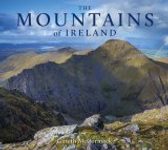About this book
This edited volume, showcasing cutting-edge research, addresses two primary questions – what are the main drivers of change in high-mountains and what are the risks implied by these changes? From a physical perspective, it examines the complex interplay between climate and the high-mountain cryosphere, with further chapters covering tectonics, volcano-ice interactions, slope stability, erosion and glacier- and snow-related hazards. Societal consequences, both global and local, of high-mountain cryosphere change are then explored, as well as the potential implications for high-mountain ecosystems. The High-Mountain Cryosphere offers a unique perspective through discussions of high-mountain cultures, livelihoods, governance and natural resources management, focusing on how global change influences societies and how people respond to climate-induced cryospheric changes. An invaluable reference for researchers and professionals in cryospheric science, geomorphology, climatology, environmental studies and human geography, The High-Mountain Cryosphere will also be of interest to practitioners working in global change and risk, including NGOs and policy advisors.
Contents
1. Introduction: human-environment dynamics in the high-mountain cryosphere Christian Huggel, Mark Carey, John J. Clague and Andreas Kääb
Part I. Global Drivers:
2. Influence of climate variability and large-scale circulation on the mountain cryosphere Imtiaz Rangwala, Nick Pepin, Mathias Vuille and James Miller
3. Temperature, precipitation, and related extremes Nadine Salzmann, Simon C. Scherrer, Simon Allen and Mario Rohrer
4. Snow and avalanches Sven Fuchs, Margreth Keiler and Sergey Sokratov
5. The frozen frontier: the extractives super cycle in a time of glacier recession Jeffrey Bury
6. Cultural values of glaciers Christine Jurt, Julie Brugger, Katherine W. Dunbar, Kerry Milch and Ben Orlove
Part II. Processes:
7. Implications for hazard and risk of seismic and volcanic responses to climate change in the high-mountain cryosphere Bill McGuire
8. Catastrophic mass wasting in high mountains Oliver Korup and Stuart Dunning
9. Glacier- and permafrost-related slope instabilities Michael Krautblatter and Kerry Leith
10. Erosion and sediment flux in mountain watersheds Dieter Rickenmann and Matthias Jakob
11. Glaciers as water resources Bryan Mark, Michel Baraer, Alfonso Fernández, Walter Immerzeel, R. Daniel Moore and Rolf Weingartner
12. Glacier floods Duncan Quincey and Jonathan Carrivick
13. Ecosystem change in high tropical mountains Kenneth Young
Part III. Consequences and Responses:
14. The honour of the snow-mountains is the snow: Tibetan livelihoods in a changing climate Hildegard Diemberger, Astrid Hovden and Emily T. Yeh
15. Ice-clad volcanoes Richard Waitt, Benjamin R. Edwards and Andrew G. Fountain
16. Debris-flow activity from high-elevation, periglacial environments Markus Stoffel and Cristoph Graf
17. Contextualizing conflict: vital waters and competing values in glaciated environments Adam French, Javiera Barandiarán and Costanza Rampini
Part IV. Conclusions:
18. Synthesis and conclusions: the future of high-mountain cryospheric research Mark Carey, Christian Huggel, John J. Clague and Andreas Kääb
Customer Reviews
Biography
Christian Huggel is a Senior Researcher at the Department of Geography, University of Zurich. He has worked in mountain regions and the cryosphere worldwide, including the European Alps, the Andes, Mexico, Alaska, the Caucasus and the Himalayas. Currently he leads several projects on climate impacts and adaptation in the tropical Andes, in particular Peru, the Indian Himalayas and the Alps, in collaboration with the Swiss and national governments. He is a Lead Author of the IPCC Working Group II 5th Assessment Report and has been a science advisor and member of the Swiss delegation at the UNFCCC Conference of Parties (COP).
Mark Carey is Associate Dean and Associate Professor of History in the Robert D. Clark Honors College at the University of Oregon. His book, In the Shadow of Melting Glaciers: Climate Change and Andean Society (2010), won the Elinor Melville Prize for the best book in Latin American environmental history, awarded by the American Historical Association's Conference on Latin American History. He is a co-founder and co-director of the Transdisciplinary Andean Research Network (TARN) that involves collaborative research with colleagues in the US, Canada and South America.
John Clague is Shrum Professor of Science at Simon Fraser University, British Columbia, and is currently the Canada Research Chair in Natural Hazard Research and Director of the Centre for Natural Hazard Research. His research interests include glacial geology, geomorphology, stratigraphy, sedimentology and natural hazards, and he has consulted for several private-sector firms and government agencies. His other principle professional interest is improving public awareness of earth science to students, teachers and the general public. Clague is a Fellow of the Royal Society of Canada, former President of the Geological Association of Canada and recipient of the Geological Society of America Burwell Award.
Andreas Kääb is Professor for Remote Sensing at the Department of Geosciences, University of Oslo. His main research focus is on remote sensing of the cryosphere, in particular glaciers, permafrost, river ice and related natural hazards in a changing world. He was chair of the Standing Group on Glacier and Permafrost Hazards in Mountains (GAPHAZ) of the International Association of Cryospheric Sciences (IACS) and of the International Permafrost Association (IPA) for 10 years. Kääb is currently running a number of projects related to observing glaciers and natural hazards from space. In 2008 he was awarded the prize for 'Excellence in Permafrost Research' by the International Permafrost Association.




































